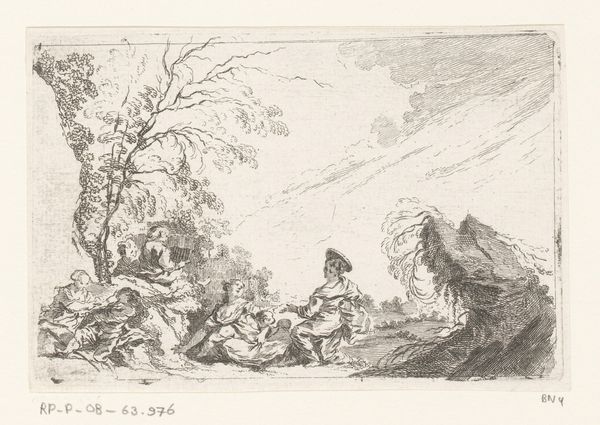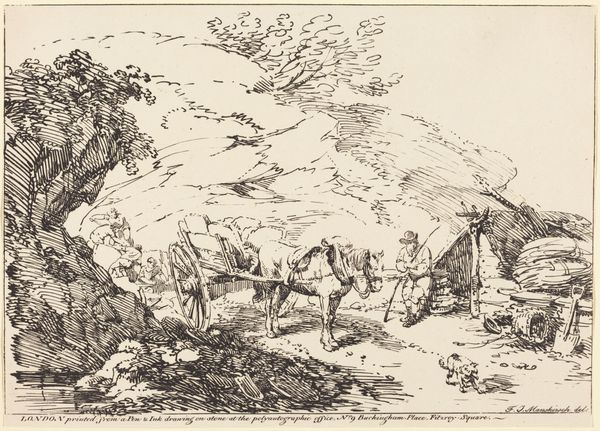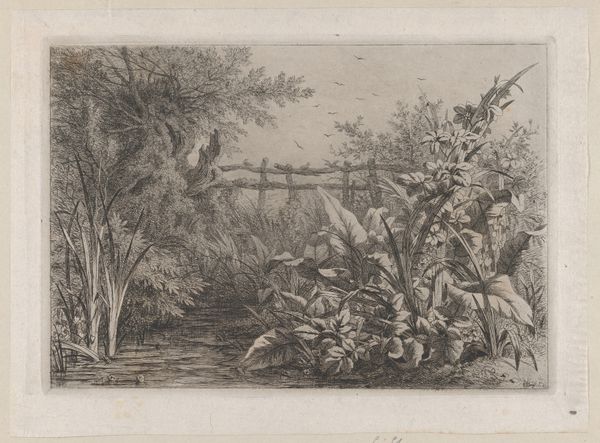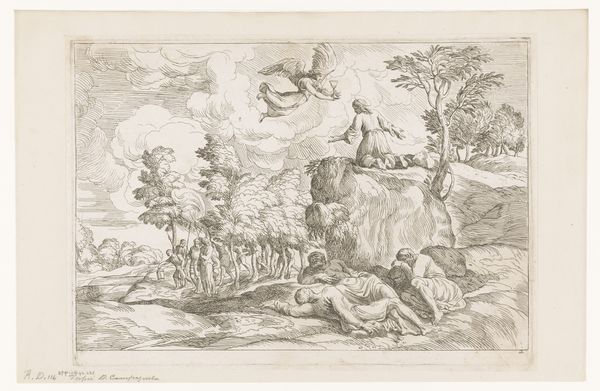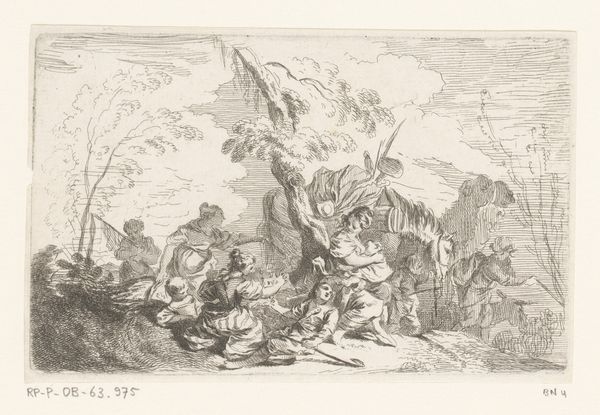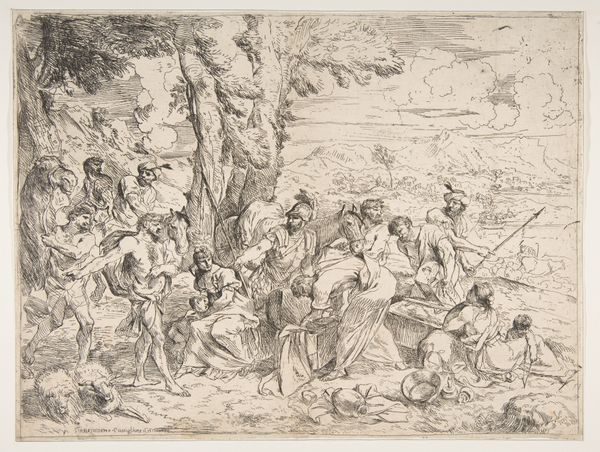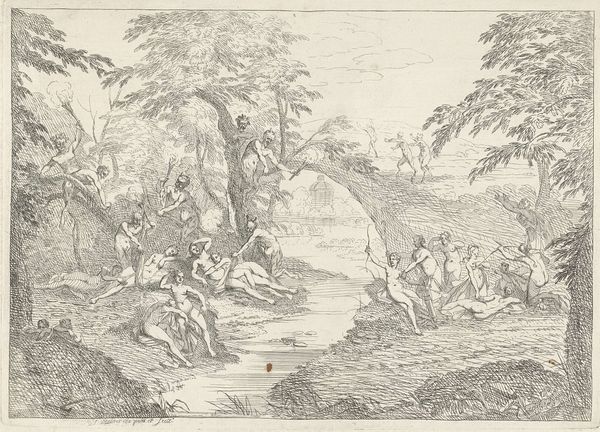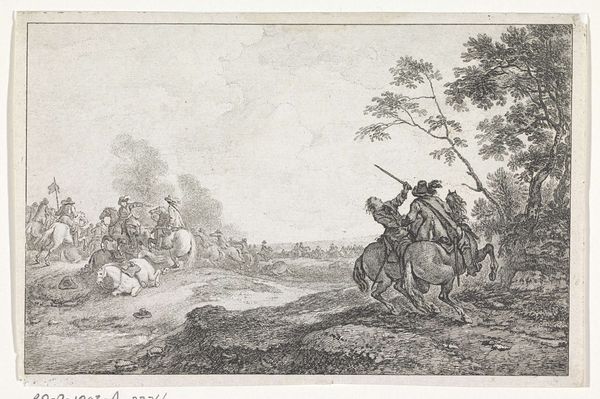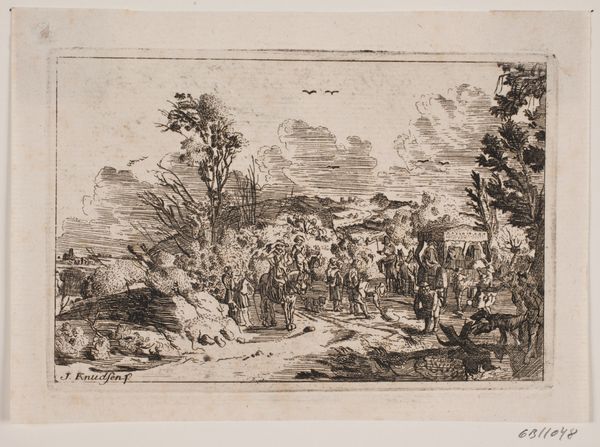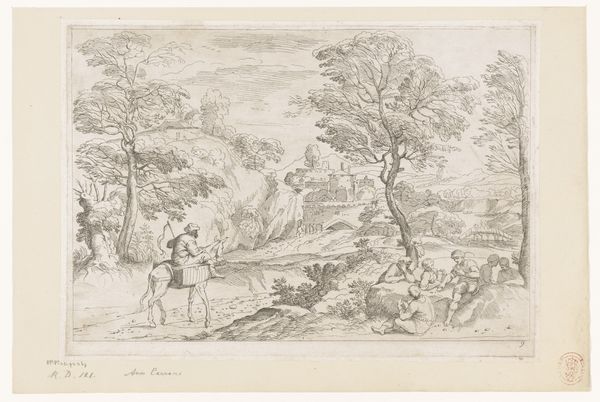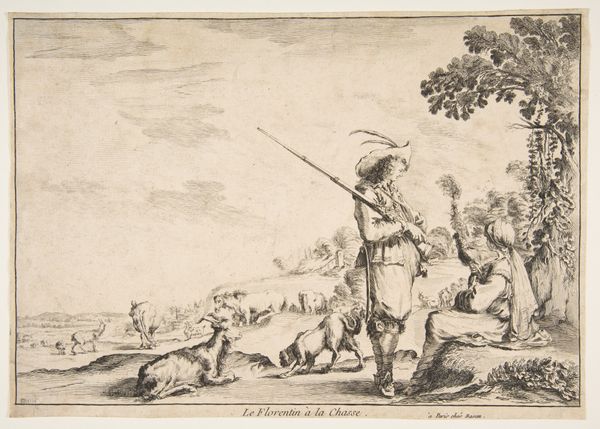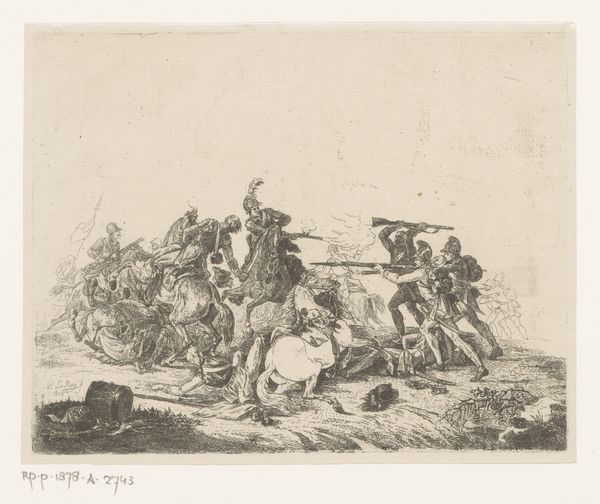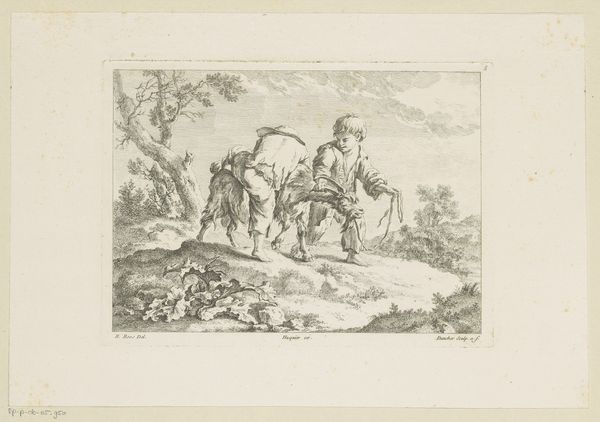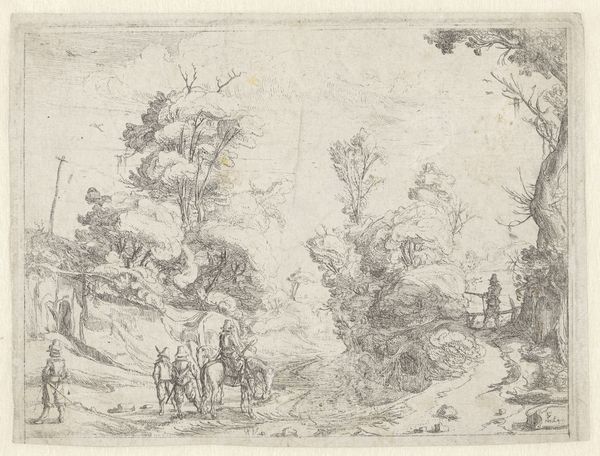
print, etching, engraving
#
landscape illustration sketch
#
baroque
#
pen drawing
# print
#
pen illustration
#
pen sketch
#
etching
#
old engraving style
#
landscape
#
figuration
#
sketchwork
#
ink drawing experimentation
#
pen-ink sketch
#
line
#
pen work
#
sketchbook drawing
#
genre-painting
#
engraving
Dimensions: height 115 mm, width 159 mm
Copyright: Rijks Museum: Open Domain
Curator: This is "Landschap met rustende herders en herderinnen," or "Landscape with resting Shepherds and Shepherdesses," an engraving dating from between 1717 and 1783, attributed to Jacques Philippe Le Bas. It's currently held at the Rijksmuseum. Editor: The light in this print seems almost to push the figures forward. Look at the complex line work – especially the trees – contrasted by that open space in the middle. It creates such a compelling tension! Curator: It's fascinating to consider this piece within the broader context of the pastoral ideal during that period. These idealized representations of rural life often glossed over the harsh realities faced by peasants, serving instead to reinforce aristocratic notions of leisure and control over the land. Editor: I can definitely see that idyllic interpretation at play. But when I look at the textures achieved through the etching, especially how the foliage is rendered, it feels almost tangible. The contrast of light and shadow gives incredible depth. Curator: I think understanding that interplay between artistic representation and social commentary is vital. Where do we locate this particular genre-painting with the emerging, complicated status of labor as understood under nascent Capitalism? What of the gendering of shepherdesses, what labor are they actually being tasked with? The bodies are seemingly made for display more than exertion. Editor: You’re right. The reclining figures do seem more posed than genuinely relaxed after laboring, don't they? Perhaps the artist sought to capture a certain aesthetic ideal, prioritizing harmony and visual pleasure above documentary realism. It certainly is not an uncritical portrayal of what it means to toil in rural circumstances. Curator: I find the absence of tools intriguing. The workers are presented more as symbols than representatives of actual laborers. A commentary of who matters more, the idea of labor, or actual labor, I think. Editor: That is interesting indeed. Looking at the relationship between form and content here has given me new questions, and allowed a greater sense of the social position behind such "rest." Curator: Absolutely. It prompts critical thinking, hopefully opening a conversation of labor as an ongoing cultural construct with historical roots.
Comments
No comments
Be the first to comment and join the conversation on the ultimate creative platform.
